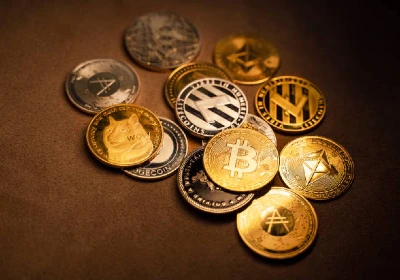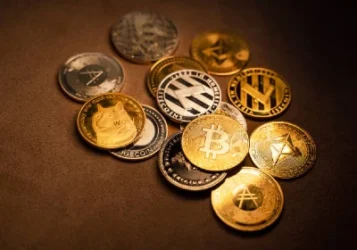Cryptocurrency has become an essential part of the digital economy, but with its rise in popularity, so have the number of scams and thefts. If you’ve found yourself a victim of crypto theft, you may be feeling overwhelmed and unsure of what to do next.
This guide will walk you through the necessary steps to take immediately, how to trace Recover Stolen Crypto, and how to protect yourself from future theft.
Also learb about Crypto Regulation 2025 Guide for Investors
People also search about :
Can Stolen Crypto Be Recovered?
The first question you might be asking is, “Can I get my stolen crypto back?” While the unfortunate truth is that not all stolen cryptocurrency can be recovered, there are cases where it is possible. The recovery process largely depends on the type of scam, the blockchain used, and whether the funds were sent to an exchange that follows proper security protocols.
Some exchanges, like Binance or Coinbase, have been known to freeze stolen funds when users report theft in a timely manner. However, in cases of decentralized finance (DeFi) scams, recovering stolen funds can be more complicated, as many DeFi platforms do not follow traditional KYC (Know Your Customer) practices.
It’s important to manage your expectations and understand that recovery is not guaranteed, but certain actions can increase your chances.
Immediate Steps After Discovering Theft
If you’ve just realized that your crypto has been stolen, it’s crucial to act quickly to Recover Stolen Crypto. Here are the first steps you should take:
- Take Screenshots and Record Transaction Details:
If you notice that funds have been taken from your wallet, immediately take a screenshot of the transaction hash and any other relevant details. This proof is essential when contacting exchanges or authorities. - Contact the Exchange (if applicable):
If your stolen crypto was held on an exchange (such as Binance, Kraken, or Coinbase), contact their support team right away. Many exchanges have the ability to freeze stolen funds temporarily to prevent them from being withdrawn. Provide them with as much information as possible, including transaction hashes, wallet addresses, and any relevant details. - File a Police Report:
In some jurisdictions, filing a police report is essential for legal recovery. Police reports are often required to initiate investigations and may also help you get in touch with other law enforcement agencies that specialize in cybercrime. Make sure to mention all the details of the theft, including any information about the scammer’s identity if available.
How to Trace Stolen Crypto
One of the ways to recover stolen crypto is by tracking the stolen funds through the blockchain. Blockchain forensics can be a helpful tool in tracking where the funds have gone. Here’s how you can get started:
- Use Blockchain Explorer Tools:
Tools like Etherscan for Ethereum-based transactions and Blockchair for Bitcoin allow you to trace the flow of your stolen funds. You can enter the transaction ID (TX ID) into these tools to track the movement of your crypto. - Blockchain Forensics Companies:
For more serious cases, you can consider using professional services like Chainalysis or TRM Labs. These companies specialize in tracing stolen funds, even when they have been mixed through various wallets. - Work with Law Enforcement:
If the amount stolen is significant, law enforcement agencies may be able to collaborate with these forensic companies to trace the funds further. Remember, the sooner you act, the more likely it is that funds can be traced.

Legal Options for Crypto Recovery
In some cases, law enforcement and legal action may be your best chance at recovering stolen crypto. Here’s what you should know about your legal options:
- When Law Enforcement Can Help:
Law enforcement may assist in recovering funds if the thief has been identified, if they are using centralized exchanges that comply with KYC protocols, or if the amount stolen is substantial. - When Law Enforcement Cannot Help:
If the crypto was taken through decentralized protocols or if it was sent to a wallet on a decentralized exchange (DEX), recovery can be much more challenging. Unfortunately, in these cases, the chances of recovering funds are slim.
Crypto Recovery Services Legitimate or Scam?
After a theft, you might come across companies offering crypto recovery services. While some of these services are legitimate, there are many scams out there. Be cautious and avoid services that promise guaranteed recovery, as this is often a red flag.
Here are a few tips to avoid recovery scams:
- Never pay upfront fees for recovery services.
- Look for reviews and verify the credentials of any service offering to help you.
- Avoid services that promise a 100% recovery rate—this is not realistic.
How to Prevent Future Crypto Theft
Once you’ve dealt with a crypto theft incident, you likely want to know how to protect yourself in the future. Here are some top security tips:
- Use a Hardware Wallet (Cold Storage):
For long-term storage of large amounts of crypto, using a hardware wallet is one of the safest options. Hardware wallets store your keys offline, making it harder for hackers to access your funds. - Enable Two-Factor Authentication (2FA):
Always enable 2FA on your exchange accounts. This adds an extra layer of security by requiring a second form of identification (such as a code sent to your phone) in addition to your password. - Be Cautious with Phishing Scams:
Scammers often use phishing emails and fake websites to trick you into giving away your private keys or login information. Always double-check URLs and never click on suspicious links. - Use Multi-Signature Wallets:
Multi-signature wallets require more than one key to authorize a transaction, which adds an extra layer of security. It’s a great way to prevent unauthorized access to your funds.
People also ask about Stolen Crypto Recovery
Can I recover crypto sent to the wrong wallet?
Unfortunately, once funds are sent to the wrong wallet, there’s little you can do unless the recipient agrees to return the funds. However, you can try contacting them directly.
Q: Do exchanges refund stolen crypto?
Exchanges may refund stolen crypto if their own security was compromised. However, if the theft was due to user error or a scam, most exchanges will not be able to offer a refund.
Conclusion
While recovering stolen crypto can be challenging, it’s not always impossible. By taking immediate action, using the right tracking tools, and knowing your legal options, you can increase your chances of recovery. Stay vigilant and implement strong security measures to protect your funds from future theft.
Can I recover stolen cryptocurrency?
Recovery is possible in some cases, especially if the funds are traced to a centralized exchange. However, success depends on the type of theft and the exchange’s security
What should I do if my crypto is stolen?
Immediately take screenshots of transaction details, contact your exchange’s support team, and file a police report. The quicker you act, the higher your chances of recovery.
Can blockchain forensics help track stolen crypto?
Yes, blockchain forensics tools like Etherscan, Chainalysis, and TRM Labs can help trace stolen funds by tracking transactions across the blockchain.
Will exchanges refund stolen crypto?
Exchanges may refund stolen crypto if their own security systems were compromised. However, if you were scammed or your private keys were leaked, recovery is less likely.
How can I prevent future crypto theft?
Use cold storage for long-term holdings, enable two-factor authentication on exchanges, and stay vigilant against phishing scams. Multi signature wallets offer added security.









